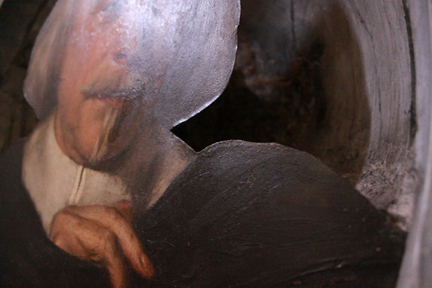Introduction to the Project
Neither Here...Nor There… presents information about commemorative portraits painted on metal and stone supports found in Italian churches and basilicas, ca. 1550-1880. During these centuries, when a patron sought to immortalize themselves by way of a mortuary monument, they most often chose to visually represent themselves by-way-of a sculpted portrait bust made of un-pigmented marble. Lesser known is that by the 1550s a small number of patrons began to choose painted portrait effigies. The majority of these appear on metal plates and stone panels. while a minority are on canvas, in the buon fresco technique (i.e. the application of pigments to a wet plaster matrix), or fashioned as micro-mosaics (with exceedingly tiny mosaic pieces referred to as tesserae). While many scholars have investigated the history of portraiture, and a small number have considered the practice of painting on metal and stone supports, etc., none have considered the presence or meaning of two-dimensional funerary portraits let alone those painted on metal and stone supports. This stands as all the more remarkable because, in Rome for example, these artworks survive in situ in the original contexts for which they were commissioned.
Neither Here...Nor There… seeks to begin the process of illuminating the geographic distribution and historical extent of this artistic tradition. All available visual and epigraphic information will be gathered and made available with the goal of providing audiences of various interest levels with something interesting.
For those curious about tombs and mortuary customs of the 16th-19th-century Italians, Neither Dead, Nor Alive… will present a tour of countless religious edifices and their funerary monuments in Rome, Florence, Verona, and eventually wherever they may be found in other Italian cities. For scholars, Neither Here...Nor There… will present the foundational information necessary for further investigations of painted, funerary portraiture, and the formulation of hypotheses as to the social and symbolic significance of these artworks in the context of Italian mortuary aesthetics.
